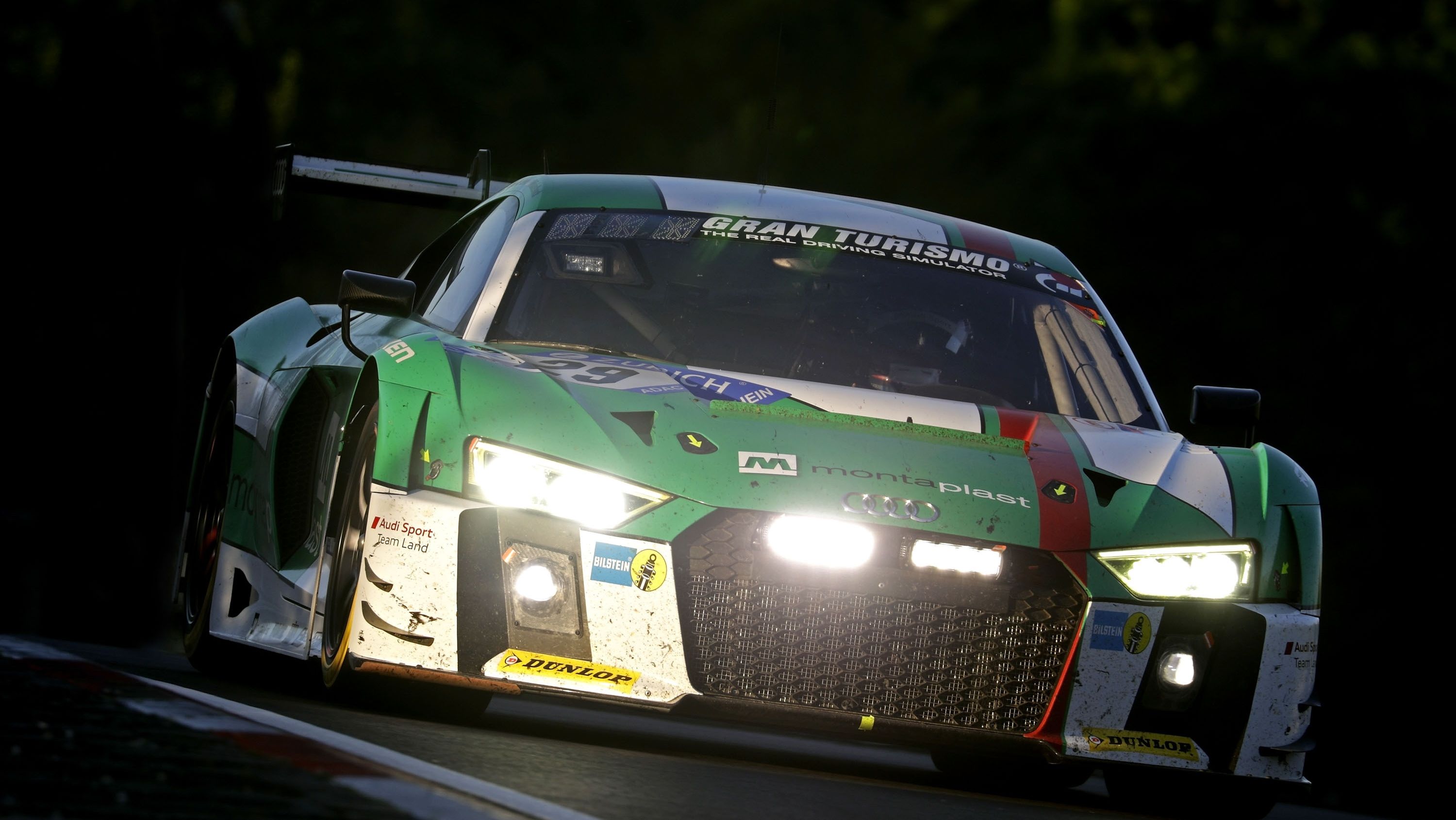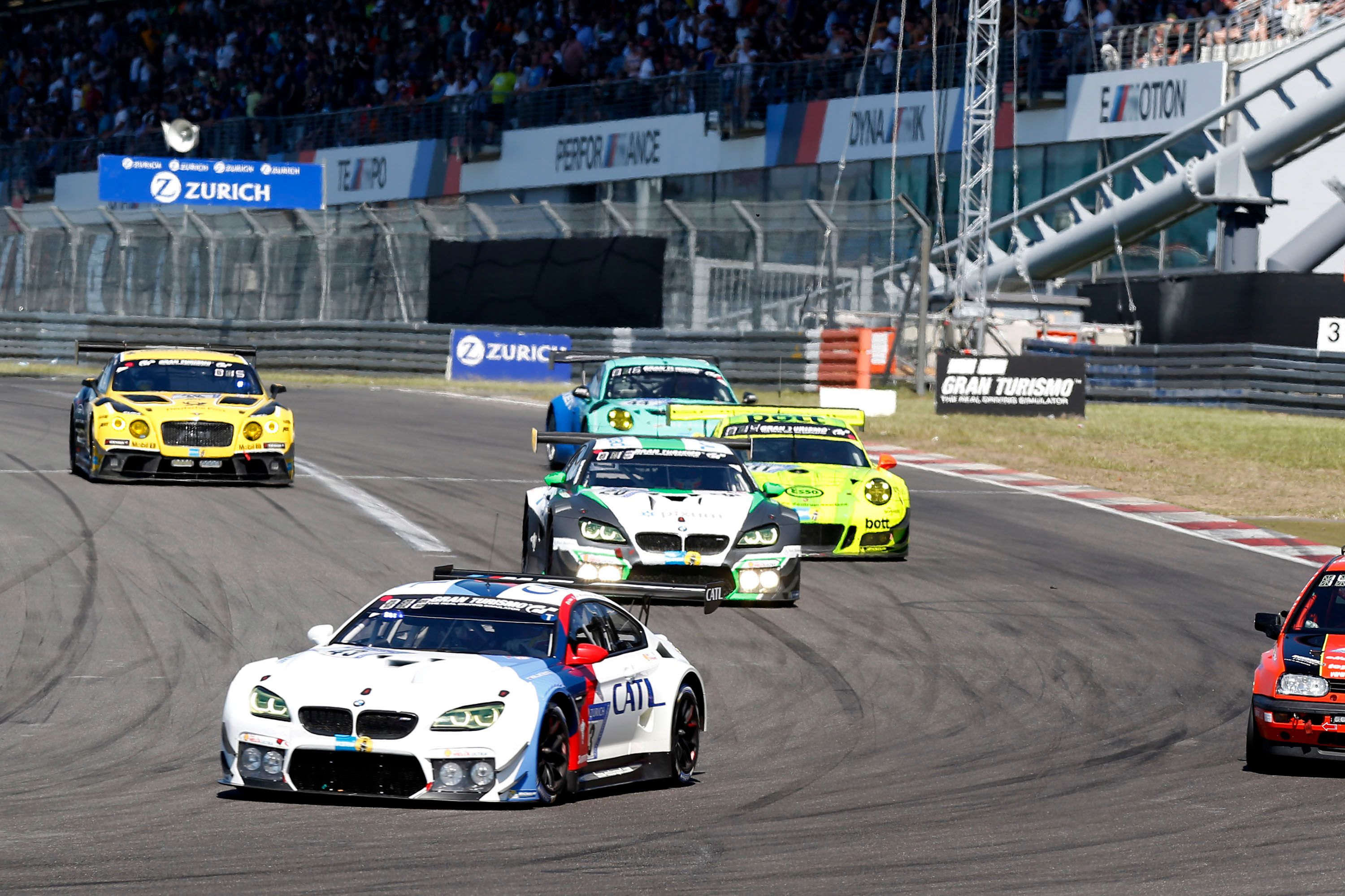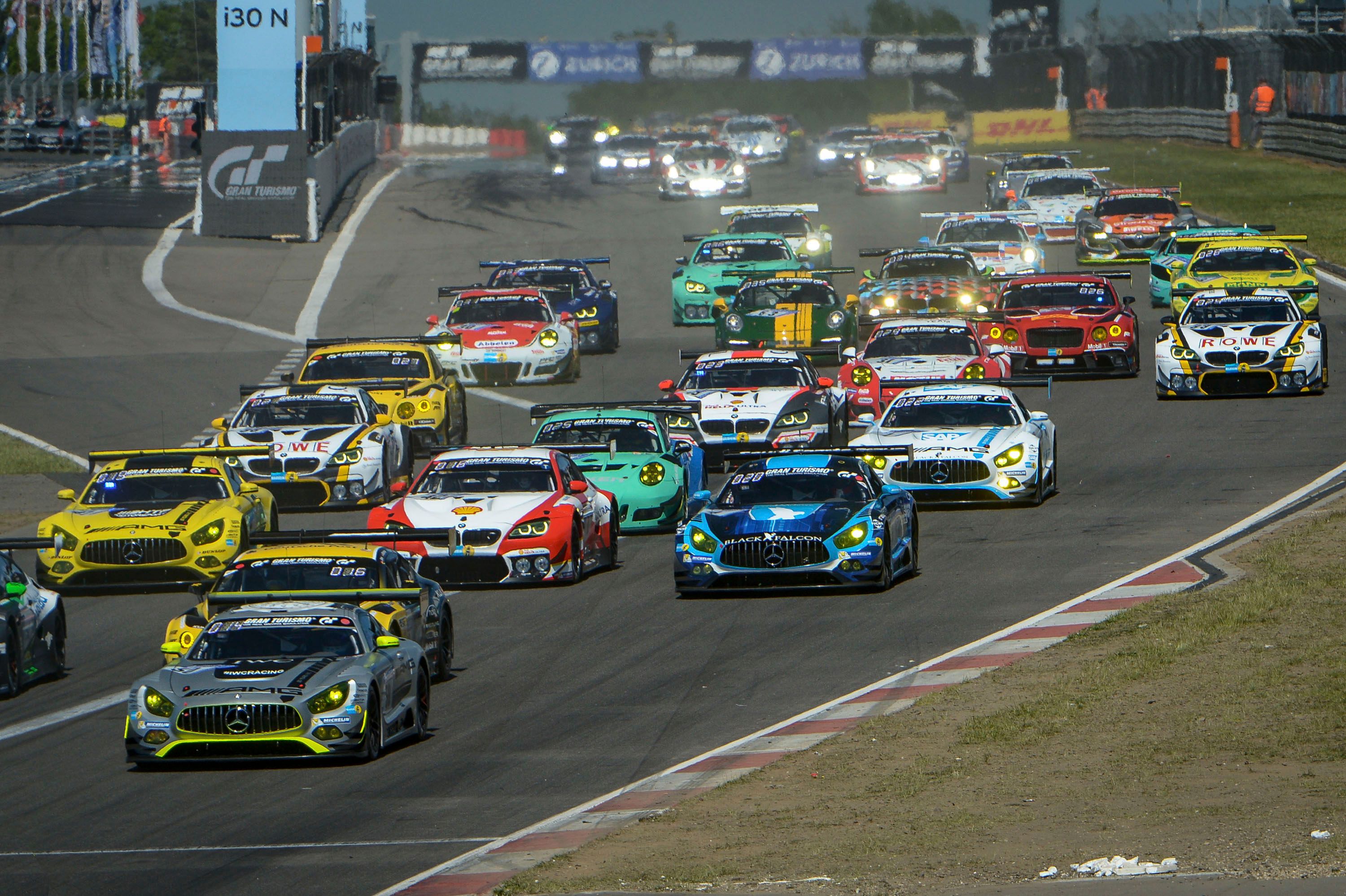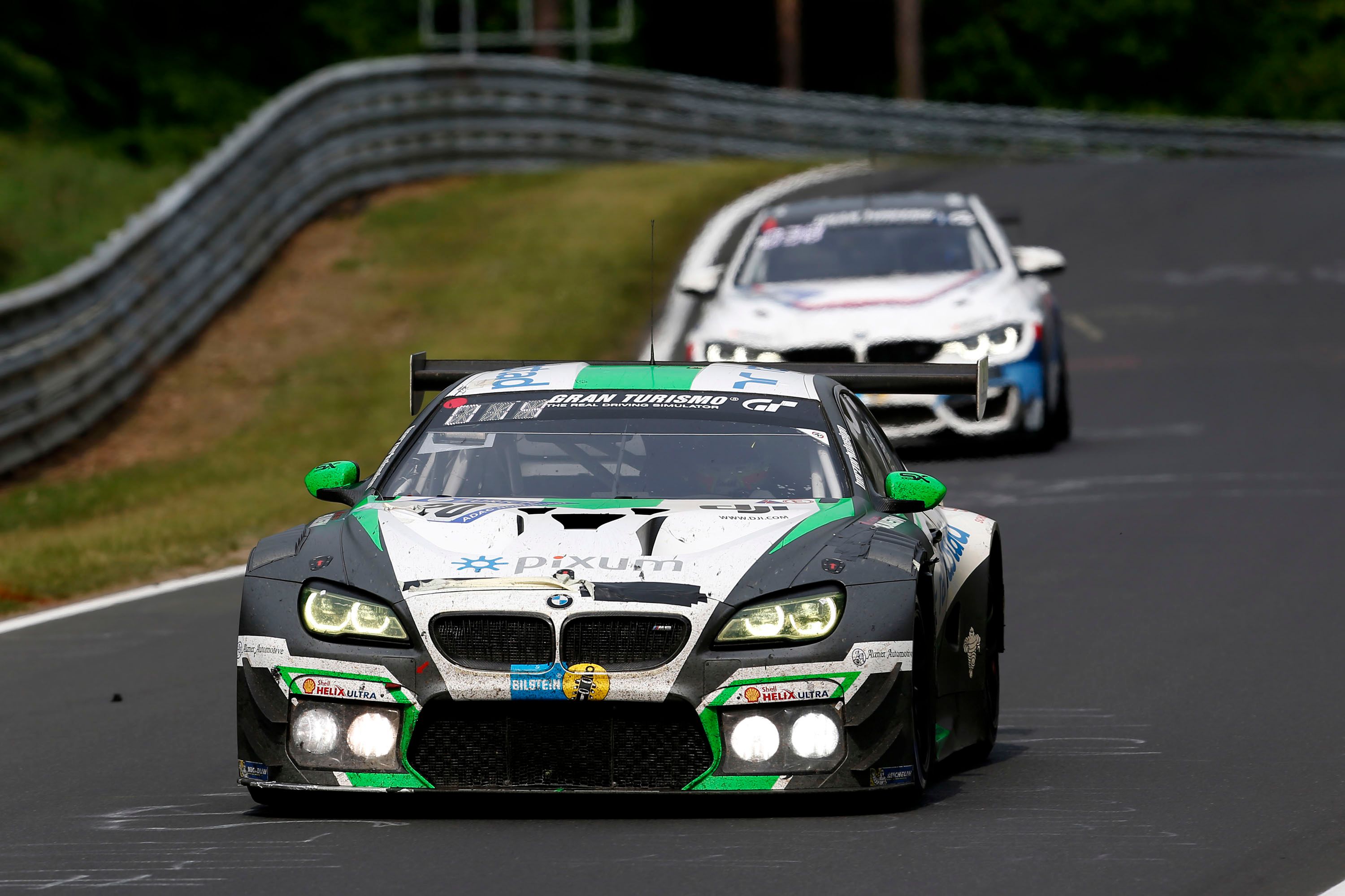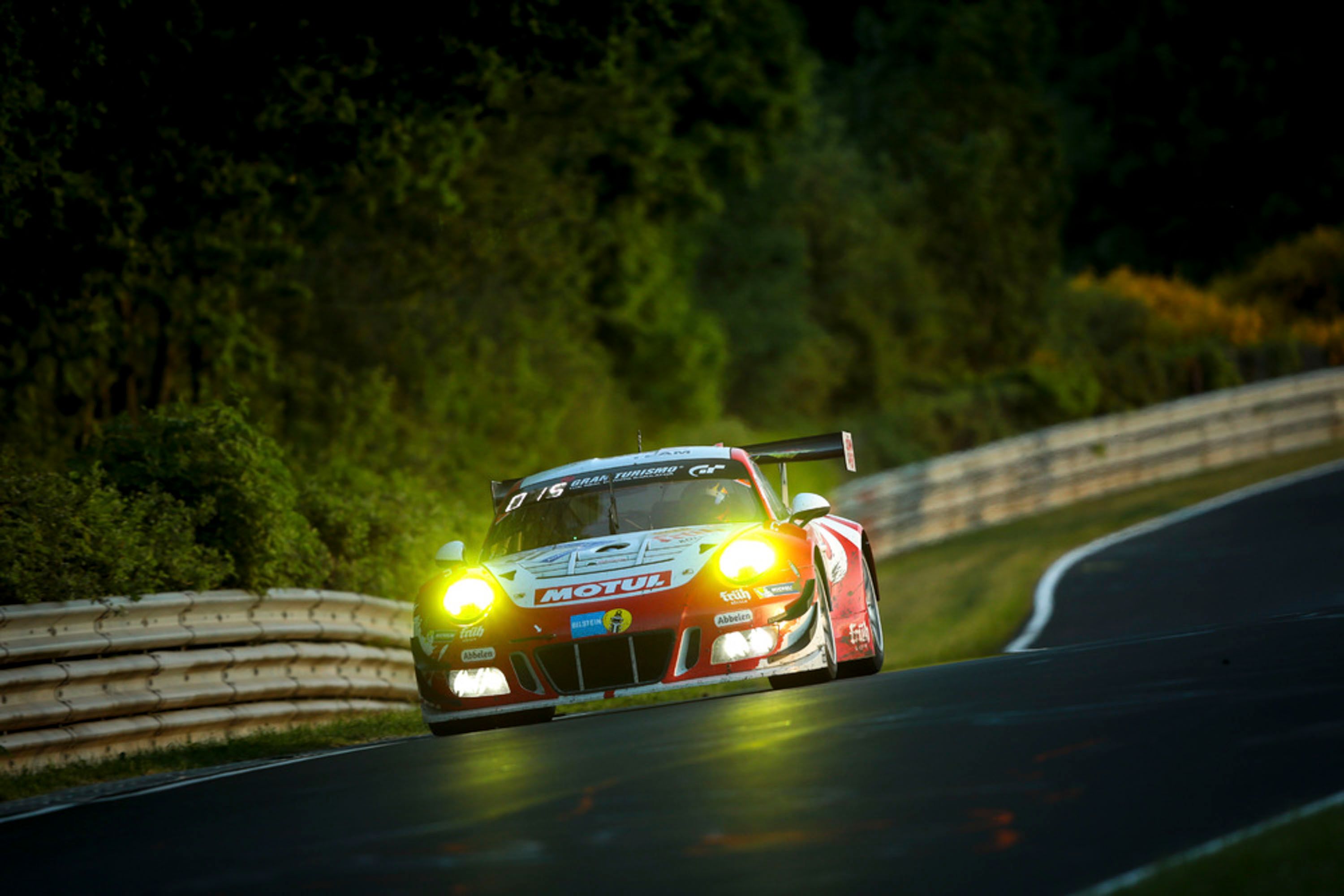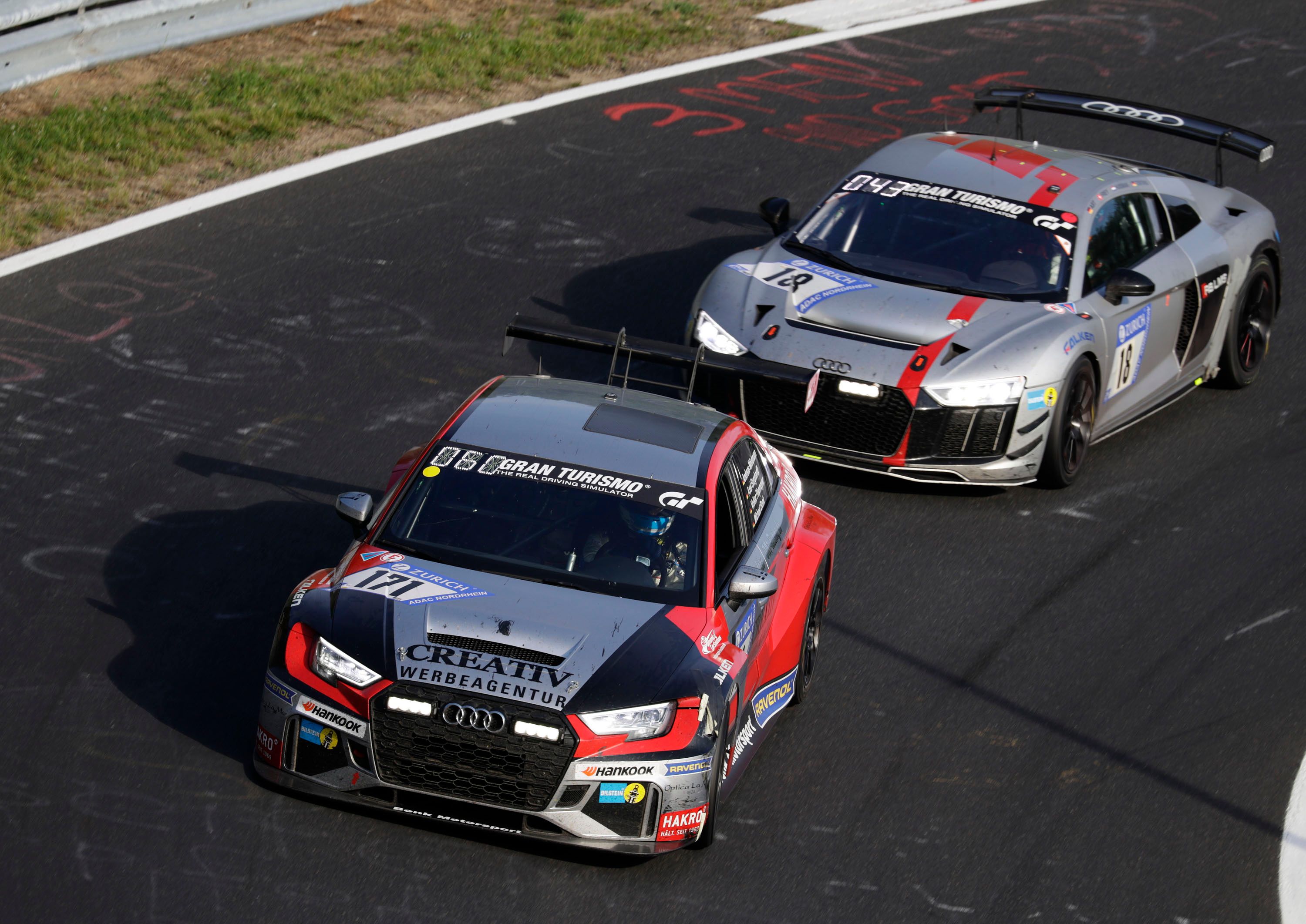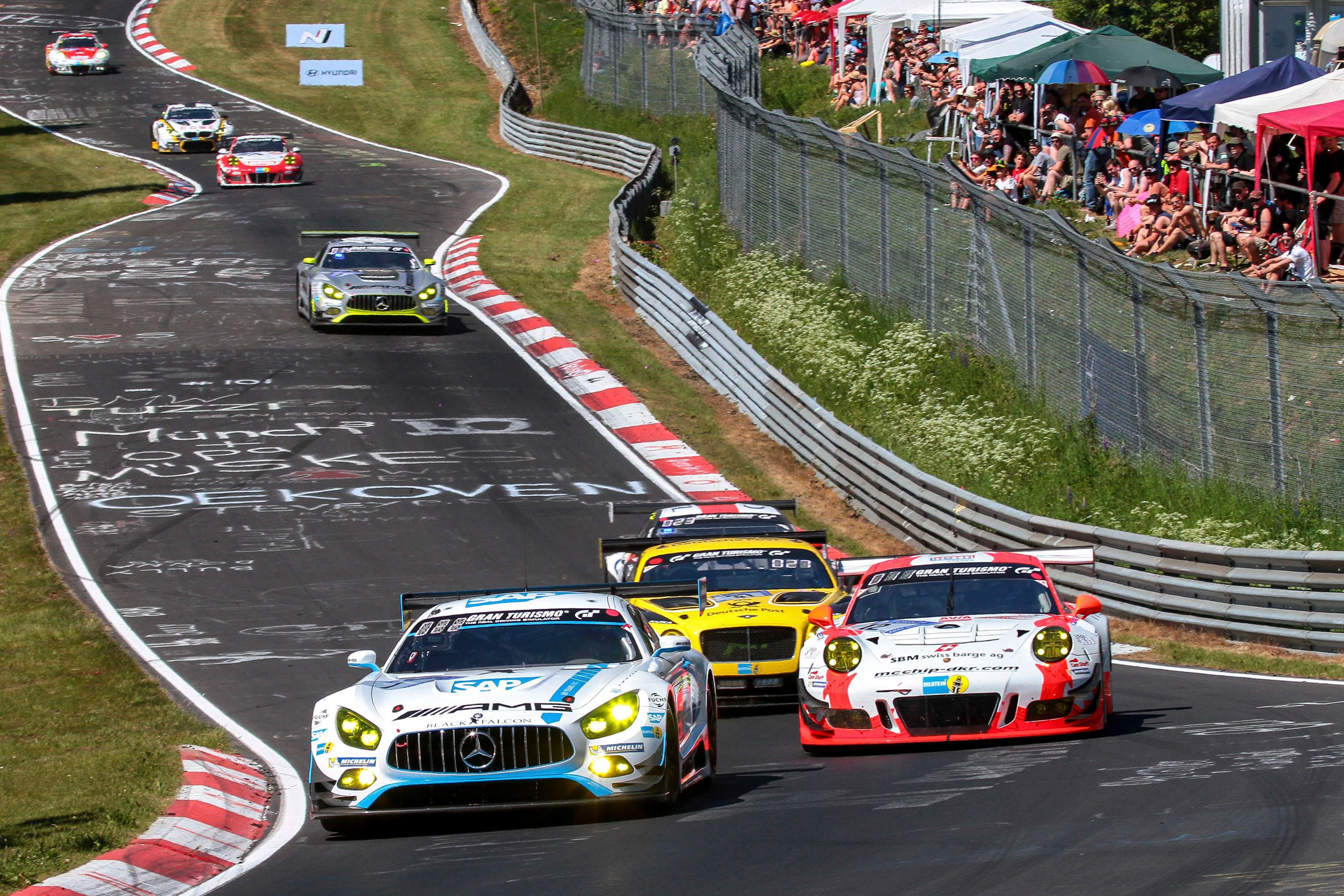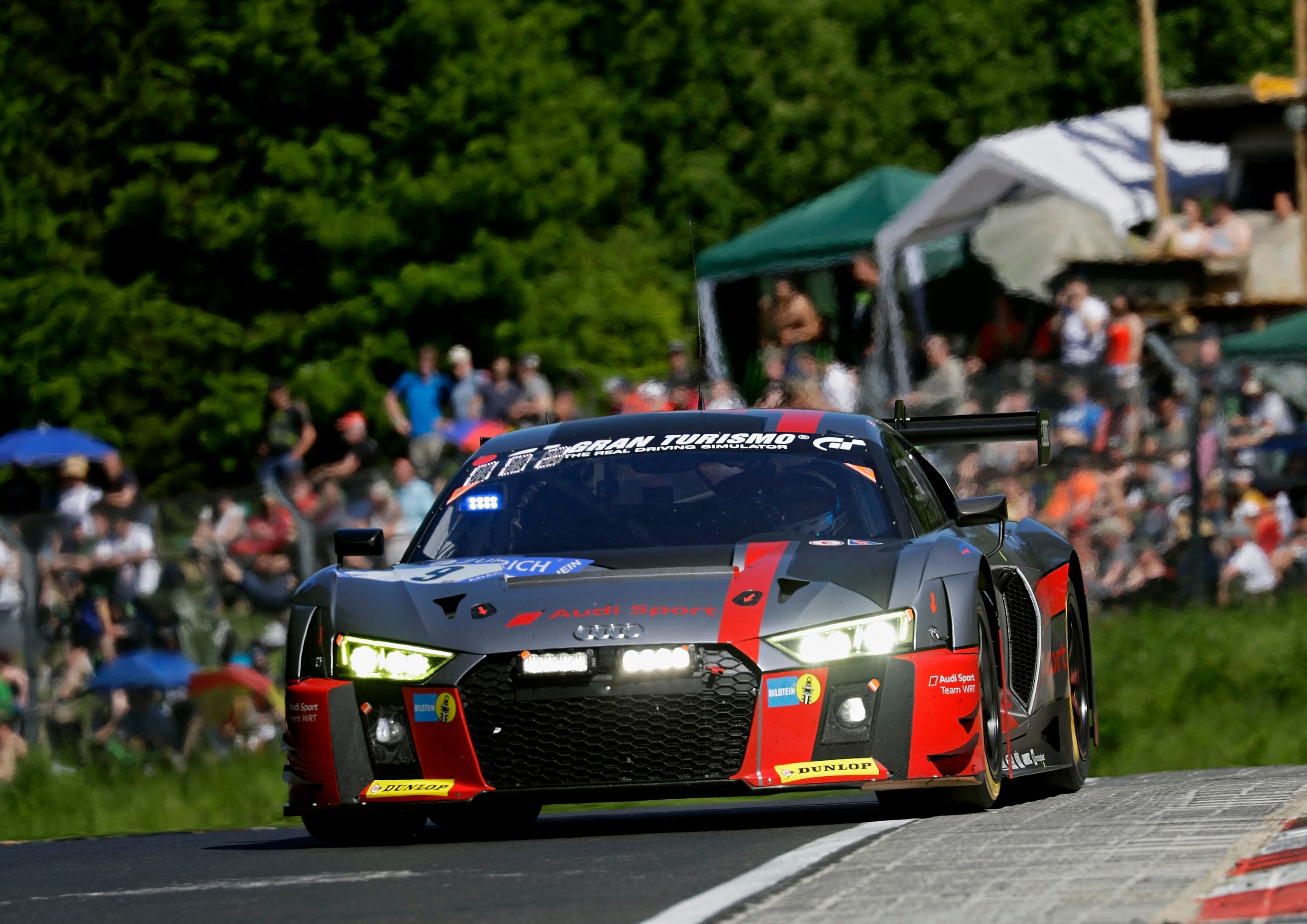The Nordschleife remains the daunting challenge it has always been and last weekend’s 45th edition of the 24-hour-long race held on the world’s longest permanent race track underlined yet again the track’s infamous reputation. It was again a race between the Germans but with as dramatic a twist as they get – although it wouldn’t seem that way if you just read the results.
Sharing the weekend with Formula 1’s crown jewel, the Monaco Grand Prix, and one of the most amazing – if not the most amazing race in the world – the Indianapolis 500 means you will most obviously be outshined. But the Nurburgring 24 Hours is not just another endurance race and the 100+ entry list, amount of factory effort, 200,000+ fans that gather annually tend to prove it. But let’s delve even deeper and look at what the twice-around-the-clock race that takes drivers around the Eiffel Mountains had to offer.
Continue reading for the full story.
Grid Round Out and Qualifying
First off, we have the pack: 161 cars of which 34 were in the SP9 category or, as we know it anywhere else, GT3. Four of these were entered in a sub-class for older homologation cars, these being the three ABT-entered Bentley Continentals and the Walkenhorst Motorsport BMW Z4 GT3.
Talking about entrants, first off Mercedes-Benz, last year’s winners. It was a story of complete domination with three AMG GT GT3 finishing in 1st, 2nd and 3rd overall and in 2017 there were seven such cars. Three apiece were entered by HTP Motorsport and Black Falcon, four of the six benefiting from factory support from AMG. The seventh car was entered by Haribo Racing.
The German manufacturer, which won the race overall for the first time ever in 2016, boasted some top lineups featuring last year’s winners Adam Christodoulou, Manuel Metzger and Maro Engel as well as other trusty pairs of hands such as Hubert Haupt, Max Gotz, Edo Mortara, Stefan Mucke, Max Buhk or Renger van der Zande.
The decision to place works drivers in all crews was strategic, in a bid to give Mercedes its best chances for a back-to-back victory. They also went with two tire manufacturers, HTP and Black Falcon having both Michelin and Dunlop shod AMG GT3s in the race.
BMW, Porsche and Audi were on site to offer mainland opposition to Mercedes-Benz, all of them in strong numbers. BMW was especially serious about their intentions to win bringing 10 M6 GT3s as opposed to “only” six R8s and six 911 GT3-Rs. BMW’s increased presence also yielded the return of their last winning team, Schubert Motorsport, in the wake of a reshuffling in the DTM ranks. Falken Motorsport, in an unexpected shift of focus, were also fielding a BMW alongside their Porsche, BMWs also being entered by Schubert Motorsport, ROWE Racing and Walkenhorst Motorsport. Driving talent was aplenty coming from both DTM and BMWs pool of GT drivers. Maxime Martin, Augusto Farfus, Markus Palttala, Nicky Catsburg, Lucas Luhr or Jorg Muller are already well-known culprits. They were joined by the new crop made up of Jesse Krohn, Kuno Wittmer, Marco Wittmann, Tom Blomqvist and Tom Onslow-Cole among others. As per usual, Walkenhorst ran Dunlops with Falken on their own rubber obviously.
Five of Audi’s six cars were poised to run on Michelins but a pre-race debacle between the tire manufacturer and the DMSB that forbid Michelin to bring their special compounds made in particular for each client manufacturer, pushed some Audi crews to go for Dunlop. That’s because the teams, W Racing Team and Land Motorsport to be precise, felt that Michelin’s free-for-all rubber was not a good enough fit for their R8s and decided to switch one of their cars to Dunlop. Audi, which won the Nurburgring 24 Hours qualifying race, had Phoenix Racing and Car Collection Motorsport also on their side and a big host of well-known drivers. ADAC GT Masters champions Connor de Phillippi and Chris Mies were present as were Mike Rockenfeller, Frank Stippler and Marcel Fassler.
Last but not least, Porsche arrived at the Nordschleife for “The Big One” after bagging the first two VLN rounds with the factory-backed Manthey outfit. The team was back again and fielded three cars. One of them, No. 911, featured most of the “classic” Manthey lineup that dominated at the ‘Ring in the late noughties in Patrick Pilet, Richard Lietz and Romain Dumas, the fourth driver being Fred Makowiecki. Two other cars were entered by Frikadelli Motorsport where Sabine Schmitz yet again starred. The sixth car was Falken’s No. 44 which has been, in the past few years, the highest finishing Porsche in the race. This time round, Laurens Vanthoor joined the already strong lineup of Dirk Werner, Martin Ragginger and Jorg Bergmeister.
Bentley, Lamborghini and Ferrari also had cars entered in SP9, the last of the bunch being a welcomed addition after the Prancing Horse was seen very little at the Nordschleife at the sharp end in the past few years. The team running the lone 488 GT3 was Team Wochenspiegel supported by Rinaldi Racing. All three Bentleys were entered by Team ABT with help from the factory Team M-Sport and the lone Huracan GT3 was, just like in 2016, entered by Konrad Motorsport.
This being said, there were chances that the winner might not emerge from the busy SP9 ranks, but from SPX. That is the class for the cars running without a homologation, the star of the group being the American Scuderia Cameron Glickenhaus sports car, shortly the SCG 003C. Two of these superb machines were entered by Swiss team Traum under the watchful eye of Jim Glickenhaus himself.
Jim would later on in the week be very happy to offer the pole position trophy to one of his own as the Top 30 pole shootout on Friday afternoon was won by Jeff Westphal in an SCG. He was quickest putting the only lap in the 8:15s. Alongside him was countryman Connor de Phillippi in the Land Audi No. 29 to make an all-American front row.
The Race
The 24 hours that followed were distinctively different to what we were treated with in 2016. If last year we’ve had unpredictable weather with rain, fog and hail, 2017 was kind to the racers and it was hot and humid (almost) throughout. In spite of early predictions that favored BMW for the victory due to their pace, it was Audi which dominated – namely the No. 29. The other R8s were never quite on the same page in terms of pace so the Land car of Kelvin van der Linde, Chris Mies, Connor de Phillipi and Markus Winkelhock led most of the race.
Their cause was also helped by the generous amount of rivals that fell to the wayside in fast progression. The No. 911 Porsche was hit when Dumas was on board, Bergmeister crashed the No. 44 car, Nico Muller collided with a slower Clio then with the barriers, destroying the No. 10 WRT car, Nicolaj Moller-Madsen also target the guardrails in his R8 as Franck Mailleux’s SCG which he took over from poleman Westphal was tagged from behind. Kaffer also had an accident in traffic while two of the Bentleys were pulled out of the running by either mechanical trouble (No. 36) or accidents (for the No. 38).
Some of the injured party weren’t out for good but some were and this helped the No. 9 Audi and the No. 98 and No. 43 BMWs to climb up the order. The other BMW, No. 42, had a less than stellar run due to it having multiple fuel pump failures throughout the event. Mercedes-Benz was certainly a bit more fortunate but their cars simply did not have the pace to keep up with the leaders. Then it was the time for the No. 43 to get in trouble, suffering a puncture after a contact with another car. The car later crashed into the barriers with Farfus behind the wheel. Schnitzer’s immaculate preparation meant that, in spite of all the trouble, the No. 42 lasted through to finish in the Top Five overall. The order ahead was, however, shuffled by the most amazing turn of fortunes or, may I say, of forecast.
Prior to the event, certain weathermen announced that rain might come in the last hour of the event but, as the race progressed, the threat of rain seemed to go away. Audi was leading with little over an hour to go when Kelvin van der Linde’s No. 29 Audi stopped on the Grand Prix loop with an electrical failure. The South-African reset the system on his own and go the car back to the pits where the team again restarted the whole system. Van der Linde was then sent back on track but he’d lost buckets of time, being passed by both the No. 9 WRT Audi driven by Rene Rast and the No. 98 BMW of Nicky Catsburg. All of the three front-runners had one more pit stop left to do which occurred with some 40 minutes left to run.
Land Motorsport was first in and the team mounted a fresh set of slicks to the car and the South-African driver remained inside while fuel went into the tanks. Then disaster struck yet again the Land squad – or so it seems. The mechanics dropped the car to the ground without properly closing one of the fuel-filler caps. This meant that they had to push the car back into position to try and screw the cap in its place. While all this was going on, out on the Nordschleife, at Pflanzgarten, rain began to fall. The team’s weather guru announced that more was on the way and, with their rivals hurdling along on slicks, the chief mechanic decided that the car should go up on the jacks once more to have wet weather tires mounted.
It proved to be the winning decision as sectors 2 and 3 were flooded by the time Rast and Catsburg got there and they had to make their way extra cautious with aquaplaning ready to take them out at every bend. This was the second to last lap and Kelvin van der Linde, now back on his way, made up well over a minute over then-leader Rene Rast. The South African passed the BMW No. 98 before the end of the lap, moving back into the lead as the No. 10 Audi pitted for tires. The ROWE Racing-entered M6 followed suite and, while WRT opted for intermediates, ROWE went for full wets.
While van der Linde cruised to a 29-second victory, Rast went on to lose second place to Catsburg and his BMW as wets proved the better choice in the end. W Racing Team were left with the third step on the podium and the lingering question if they should’ve stayed on their slicks to keep track position and have Rast battle van der Linde on track. The question over their decision will, though, remain unanswered.
For those who will look on the results, the race will seem lackluster: Land No. 29 started from the front row, led most laps and won. But for those who followed closely, the final 40 minutes will be remembered as some of the most exciting endurance racing has produced in the past few years as what was, merely minutes before, a clear win for Land, turned to a disaster and then bounced back in Land’s favor as the weather god’s decided to throw another curve ball right at the very end.
Away from the overall podium, Team Traum’s SCGs kept going and one of the won SPX while Aston-Martin’s development team won SP8 with a Vantage GT8, near-stock model.
The Nordschleife again proved incredibly unpredictable, its 15.6-mile-long race track kneeling some of the best teams and driver lineups for the 45th time. This showed that those in the know are right: the Nurburgring 24 Hours is tougher than both the Le Mans 24 Hours and the Spa-Francorchamps 24 Hours. We can’t wait for the 46th edition in 2018!
The Results
Top 10 Race Results
|
Pos |
No. |
Class |
Team |
Car |
Laps |
|
1 |
29 |
SP9 |
Audi Sport Team Land |
158 |
|
|
2 |
98 |
SP9 |
Rowe Racing |
158 |
|
|
3 |
9 |
SP9 |
Audi Sport Team WRT |
158 |
|
|
4 |
42 |
SP9 |
BMW Team Schnitzer |
158 |
|
|
5 |
1 |
SP9 |
Mercedes-AMG Team Black Falcon |
158 |
|
|
6 |
31 |
SP9 |
Frikadelli Racing Team |
157 |
|
|
7 |
22 |
SP9 |
Wochenspiegel Team Monschau |
157 |
|
|
8 |
33 |
SP9 |
Falken Motorsports |
157 |
|
|
9 |
8 |
SP9 |
Haribo Racing Team Mercedes-AMG |
157 |
|
|
10 |
99 |
SP9 |
Rowe Racing |
157 |
For the full results, access this link.

